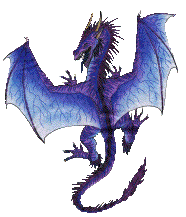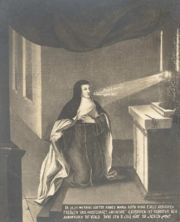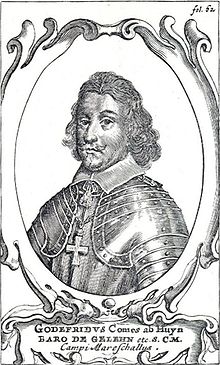Our story
This Chapter
Whence our legend
Charlemagne's gift
Grains in horse manure
And the Huyns carry on
The winged serpent
Bibliography
Temper of the times
Footnotes
|
|
"Legend: A lie that has attained the dignity of age" Last revision: November 7, 2011 There is a wonderful legend that connects the first Huyn van Amstenrode to the court of Charlemagne (768-814). Here it is, as translated from the Internet, but previously published in: Pierre Kemp, Limburgs Sagenboek, Gebrs van Aelst, Maastricht, 1925. 3 Tudon, King of the Huns, a Saxon tribe, came with a large entourage to Aachen to have himself baptized. Charlemagne received the foreign sovereign, who had recently subjected himself, with much pomp and great festivity.* 4 Among Tudon's nobles was a strong and good-looking young man, who had delivered Aachen's environs from a dragon. Emperor Charles liked him very much. He retained the young man at his court, where he became known under the name "the Huyn." 5 Meanwhile, the daughter of the Emperor, Emma, had eloped with Eginhard, his private secretary. The two lovers hid themselves in the forests between Aachen and the Meuse river. There they cleared land to support themselves, and built a cottage. 6 Because the loss of his daughter caused the emperor much sorrow he went hunting frequently. During one of those hunting parties, the young Huyn discovered Emma and Eginhard's hideout. The Emperor reconciled with them soon after. 7 As token of his gratitude, Emperor Charles gave the Huyn his daughter's abode. He also had built there a castle which he named Emma's rode to commemorate the gift forever. The name then changed to Amstenrode and subsequently to Amstenrade. 8 The counts Huyn of Amstenrade blossomed till the close of the seventeenth century. When the last member of the family died, two white swans flew up from the castle to Amstenrade's pond. The next morning the pond had dried out and it has remained dry ever since. 9 Legendary as the story is, there are elements clearly in accord with historical record and the way people thought what was meet and proper at the time. For example, it is on historical record that Charlemagne did not permit his daughters to to contract a sacramental marriage so as to avoid challenges to the principal line of his offspring, the male line that is. Nevertheless, at least one daughter, Bertha, had a recognised relationship with Angilbert, a prominent member of Charlemagne's court circle. As for the name Huyn, one account has it that it derives from the, now-Belgian municipality Hu (Walloon), Huy (Fr.), or Hoei (D.)."* Accordingly, the earliest Huyn probably was the influential bishop Ansfriedus Comes ab Huy (also known as Ansfried von Utrecht, Ansfrid, Anfridus), who was born around 940 and died on May 3, 1010 at Hohorst, a monastry near Leusden. Anfriedus played an important political roll during the reign of Otto I, a man who, as a Roman emperor, considered himself a successor to Charlemagne. There are a number of Dutch sources about Ansfriedus von Huy, among which a Vita from the 11th century. 10 It is also possible that the name Huyn (and its variants like Huynen, Hoen and Hondt) derive from the Roman and Germanic military rank of honderdsman (L. centurion).* The first Merckelbach's father took the name Huyn, Servaes ("Vaes") Huyn van Amstenrade. Whether or not he was related in some way to an older Huyn, I do not know. What we do have is records of his descendants known by that name, see Roots and onwards. There we see the name Huyn associated with Amstenrade and some early Merckelbachs as well as just by itself. Wikipedia contains articles about the Huyn and the Huyn van Amstenrade families, in German and Dutch, respectively. Mention in a document from 1268 of a Willem Huyn, son of Gerardus de Houn (the Houn) strengthens our belief that Huyn does indeed mean hondersman. 11 From 1350, members of the Huyn family lived in a reinforced tower in the village Amstenrade. They gradually expanded it into comfortable living quarters. Religious strife during the 15th and 16th centuries caused the Huyn family to withdraw to the area around Metz in France. During the 17th century, a branch of the family moved to Hungary and received nobility status as it later did in Austria as well. Evidently, already in the 14th century was there an extensive branch of the family in Lorraine.* 12 The 16th and 17th centuries are the most important period of the Huyn family in The Netherlands. During this period, they acquired the "Herrschaften" Amstenrade and Geleen. In 1557, the family had acquired in fief the region Amstenraedt, Brunssum, Jabeek, Bingelrade and Merkelbeek. Geleen und Spaubeek were added in 1654 to form the "Grafshaft" Amstenraet-Geleen. As we already have seen, Merkelbeek went to Vaes Huyn von Amstenrade's son Reynart in 1574. For more about the Huyn family (in German), click here. 13 One cannot help but have his curiosity aroused with the name Huyn and the dragon that makes the crest of Huyn van Amstenrade's coat of arms and of those of other Merckelbachs as well. In some cases the crest is a swan. Rudolf Merckelbach's De afstammelingen van Gregorius (Goris) Mer(c)kelbach informs us that, according to the Central Office of Genealogy in The Hague, it is not logical to feature a swan as crest because of a convention that the dominant pictorial element of crest and shield should be similar. A snake would have been more in line with the double-serpent-cross that is the mark of the Huyns and Merckelbachs. A dragon might be perceived as a combination of a serpent and wings. It is a mythical creature typically depicted as a gigantic and powerful serpent or other reptile with magical or spiritual qualities.* 15 
A dragon is a legendary creature, typically with serpentine or reptilian traits, that feature in the myths of many cultures. A western dragon (as opposed to a Chinese dragon) is a bat-winged snake, typically with four legs. (Source) 16 The double-serpent-cross is recognized in heraldry as an old Germanic symbol for cunning. Ah, cunnung! What is another, even more prominent embodiment of cunning? The fox, of course, Reinart the Fox! And, indeed, we find in Rudolf Merckelbach's book a shield crested with a winged fox, the shield itself showing the claw of a bear grasping a bloody heart. All of which indicates that it was part of the early Merckelbachs' mindset that cunning can more than make up for power. "Wie niet sterk is moet slim zijn," as the Dutch saying goes, "He who is not strong should be cunning." The double-serpent-cross is the brainy response to that symbol for brawn, the lion. 17 Bibliography
|
|
The members of the English House of Tudor derived their name from Tudon. [Whether this is the above-mentioned King Tudon is to me still an open question. HvE]. * fn1 J.L.M.P.T. Merckelbach-Hovens, "Het Wittemse patriciersgeslacht Merckelbach." Limburgs Tijdschrift voor Genealogie, No. 32 (2004), p.45. * fn2 In the Middle Ages, Huy was one of the most prosperous cities on the Meuse. It had a flourishing economy based mostly on metallurgy, but also on tanning, sculpting, woodworking, and winemaking. In the tenth century, Huy was promoted to county status, but soon feudal authority went to the Bishop of Liège who thereby himself became a prince. Thus we speak of the Prince-Bishopry of Liège. Huy became the recipient of the first historically known charter north of the Alps, confirming it as a city in 1066. * fn3 This paragraph mirrors the information found in Rudolf Merkelbach's book. A careful look at the Merckelbach family crests show that the snakes have ears, in other words, they are, in fact, dragon heads. For more about dragons, click here. * fn5 |
--
| top of page |
|
Page maintenance:
Page format: Nov. 22, 2011
Story edit: Nov. 25, 2011
Timeliness
¶ 12 and footnote fn3A (…link changed…):
Reminders
none
Linkcheck: Nov. 25, 2011
XHTML verify: March 10, 2015
Backups: Nov. 25, 2011




